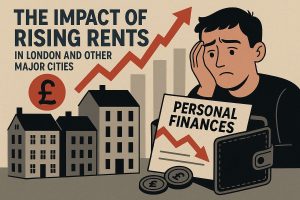In an era marked by a relentless cost-of-living crisis, the weight of debt presses down on an increasing number of individuals, casting shadows over financial security. However, irrespective of the magnitude of financial struggles, there exists a path toward resolving debt issues.
Though the journey may be fraught with challenges and complexities, taking proactive steps sooner rather than later significantly alleviates the burden. Our comprehensive four-step guide not only offers a roadmap for tackling debt but also provides access to invaluable one-on-one assistance, guiding individuals through the labyrinth of financial distress with clarity and support.
Step 1: Assess Your Situation

Understanding the Gravity of Debt
Debt, a product of spending exceeding income, often begins innocuously with minor incidents like exceeding overdraft limits or indulging in unnecessary purchases on credit cards. Yet, left unchecked, debt can swiftly snowball into an unmanageable burden. Addressing the issue promptly is imperative, as early intervention facilitates smoother resolution and diminishes the need for formal debt assistance.
Identifying Debt Crisis
Discerning whether you’re ensnared in a debt crisis entails evaluating your ability to cover essential expenses such as housing, utilities, and minimum credit card payments. Moreover, if your non-mortgage debts eclipse your annual take-home income, you may find yourself on the precipice of financial crisis. Recognizing these warning signs serves as the crucial first step toward remedying the situation and charting a course toward financial stability.
Step 2: Implement Pain-Free Savings
Managing Expenses Wisely
Crafting a budget emerges as a cornerstone when navigating the labyrinth of debt. Leveraging tools like our Budget Planner empowers individuals to gain comprehensive insight into their financial landscape, uncovering hidden expenses that might otherwise derail even the most meticulously constructed plans. By scrutinizing regular payments and eliminating redundant subscriptions, individuals can liberate resources for debt repayment.
Maximizing Entitlements
Exploring potential entitlements to state benefits can provide an additional lifeline, even for households with relatively robust incomes. Utilizing resources such as the Benefits Calculator unveils avenues for assistance, ensuring individuals are not overlooking potential aid that could significantly bolster their financial resilience. Moreover, understanding tax credits, housing benefits, and other available support can provide substantial relief, making a significant difference in the overall financial picture.
Step 3: Embrace Painful Savings
Adopting Lifestyle Adjustments
When traditional cost-cutting measures prove inadequate, embracing more profound lifestyle changes becomes imperative. Analyzing discretionary spending habits and differentiating between luxuries and necessities empowers individuals to prioritize essential expenses.
Embracing frugality and reevaluating spending patterns lay the groundwork for sustainable debt reduction and long-term financial stability. Moreover, exploring alternative income sources or side hustles can provide additional funds to accelerate debt repayment and build a financial safety net for the future.
Leveraging Money Mantras
Martin’s Money Mantras provide a pragmatic framework for evaluating purchasing decisions, fostering mindfulness in consumption habits. Whether navigating financial constraints or exercising fiscal prudence, adhering to these principles cultivates financial resilience and guards against impulsive spending, empowering individuals to stay on course toward debt-free living.
By internalizing these mantras and making them a guiding principle in financial decision-making, individuals can develop a lasting mindset shift that supports long-term financial health, fosters disciplined spending habits, and promotes a proactive approach to managing personal finances. This transformation not only aids in immediate debt reduction but also builds a solid foundation for future financial stability and growth.
Step 4: Seek Professional Assistance
Accessing Non-Profit Resources
In cases of severe financial distress or unsuccessful attempts at self-remediation, seeking guidance from non-profit debt counseling organizations becomes imperative. Engaging in one-on-one consultations with trained professionals not only provides personalized assistance but also grants access to beneficial programs like the ‘breathing space’ scheme, offering temporary respite from creditor pressures.
These organizations often have a wealth of resources and expertise to offer, including debt management plans, negotiation with creditors, financial education programs, personalized budgeting assistance, and legal advice. All of these services are geared toward helping individuals regain control of their finances, overcome financial challenges, and achieve long-term economic stability.
Choosing Reputable Assistance
Prioritizing reputable debt charities over profit-driven entities is paramount to avoiding exacerbation of financial woes. Organizations such as Citizens Advice, StepChange Debt Charity, and National Debtline offer comprehensive support services and advocate for sustainable debt management strategies, ensuring individuals receive the assistance they need to regain control of their financial destinies.
Additionally, seeking recommendations from trusted sources or reading reviews can help individuals identify organizations that prioritize their clients’ well-being over financial gain. In conclusion, overcoming debt necessitates a multifaceted approach encompassing prudent financial management, lifestyle adjustments, and expert guidance.
By adhering to the principles outlined in our four-step guide, individuals can navigate the complexities of debt with resilience and determination, reclaiming control over their financial destinies and forging a path toward lasting prosperity. The journey toward financial freedom may be challenging, but with dedication, support, and the right strategies, it is achievable for anyone willing to take the necessary steps.





